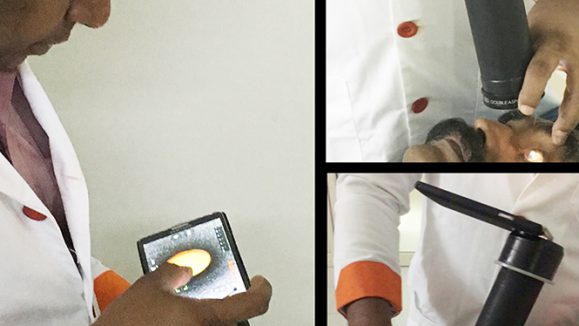Ah robotics. They are a staple of our imaginations, with visions of the future often predicated on either utopia (where labor is made unnecessary by advanced AI technology) or dystopia (where the Terminators take over and mankind is reduced to little more than cell batteries). But while these science-fiction conjurings are interesting — they’re hardly grounded in reality — and of very little use to ophthalmology. In reality, however, robotics offers remarkable transformative value in ophthalmology, especially in vitreoretinal surgery.
Vitreoretinal surgery has experienced remarkable development in the last few decades to the benefit of millions of patients, whether suffering from macular hole, excessive floaters or diabetic retinopathy. Particularly game-changing in this field was the development of the closed pars plana vitrectomy by Robert Machemar, which eliminates the need for keratoplasty and operates with a closed system with controllable intraocular pressure.1 Since its invention in the 1970s, this contribution has remained a gold standard. But now, thanks to advances in robotics and optical coherence tomography (OCT), new innovations have appeared with great promise.
New Technology for Steadier Hands
A Review of Robotic and OCT-Aided Systems for Vitreoretinal Surgery was drawn up by three researchers from Vanderbilt University (Nashville, Tennessee, USA). The paper highlights leading developments in the application of robotics technology and OCT in vitreoretinal surgery. Specifically, the paper examines new techniques that can overcome barriers of perception, tremor and dexterity that are nearing their feasibility for clinical use.
According to the Vanderbilt researchers, there are four technologies that are particularly promising: handheld instruments with intrinsic robotic assistance, teleoperated robotic systems, hand-on-hand robotic systems, and magnetic guidance robots. Pointing out that vitreoretinal procedures often depend on the safe manipulation of the delicate anatomy of the retina, these new techniques need to offer the user as smooth a procedure as possible with minimal strain or stress.2
Beginning with handheld systems, the researchers found that a number of promising tools have been developed, especially the Micron, which was designed to sense a surgeon’s tremor and distinguish those movements from intentional motion.3 The Micron device achieves this by leveraging the effects of constructive and destructive interaction of wave signals to filter the user’s tremor from the tooltip. After analyzing the tool’s application, they found that it had a success rate of 63% in experimental vessel cannulation,2 highlighting its efficacy thanks to sensors at the tool’s tip that isolate retinal forces from the sclerotomy interaction forces, ensuring damaging forces on the retina are not applied.

Dutch Robotics and Huge Magnets
The section covering teleoperated robotic systems was the most comprehensive section of the study and is well worth a paper in its own right. The study highlights several interesting developments, in particular, the Preceyes Surgical Robotic System (Preceyes, Eindhoven, The Netherlands) stood out as it has motion control that the surgeon uses to command surgical tooltip position. The minimized interaction forces between the surgical tool and sclerotomy mitigate scleral trauma and the device also includes external OCT imaging to establish tool tip boundaries.2
The study draws attention to the benefits of hand-on-hand robotic systems as they can enable microsurgeries that are impossible with traditional surgical tools, though this does require a degree of skill. The Steady-Hand, a cooperative robotic system, is singled out for praise as it allows for smooth, natural motion profiles that a surgeon would typically use during retinal procedures without extraneous tool movements.4 It also includes combined inputs from OCT imaging and minimizes resistance to limit membrane tearing.2
Finally, the last section to be covered by the study looks at magnetic guidance robots, a relative novelty that emerged over the last decade, which utilizes an extraocular magnetic field to control robotic microcapsules within the eye for procedures like retinal vein cannulation. According to the Vanderbilt researchers, this technology’s advantage is that it can achieve high levels of intraocular dexterity and maneuverability without physical attachment to the extraocular space. However, this includes a drawback, namely the expense of complex magnetic field generators that need to be placed around the patient’s head.2
References
- The History of Vitrectomy: Innovation and Evolution. Retina Today. Available at https://retinatoday.com/articles/2008-sept/0908_05-php. Accessed on February 2, 2022.
- Ahronovich EZ, Simaan N, Joos KM. A Review of Robotic and OCT-Aided Systems for Vitreoretinal Surgery. Adv Ther. 2021;38(5):2114-2129.
- Becker BC, Voros S, Lobes LA, et al. Retinal Vessel Cannulation with an Image-Guided Handheld Robot. Conf Proc IEEE Eng Med Biol Soc. 2010; 2010: 5420–5423.
- Taylor R, Jensen P, Whitcomb L, et al. A Steady-Hand Robotic System for Microsurgical Augmentation. Int J Robot Res. 1999;18(12):1201–1210.



